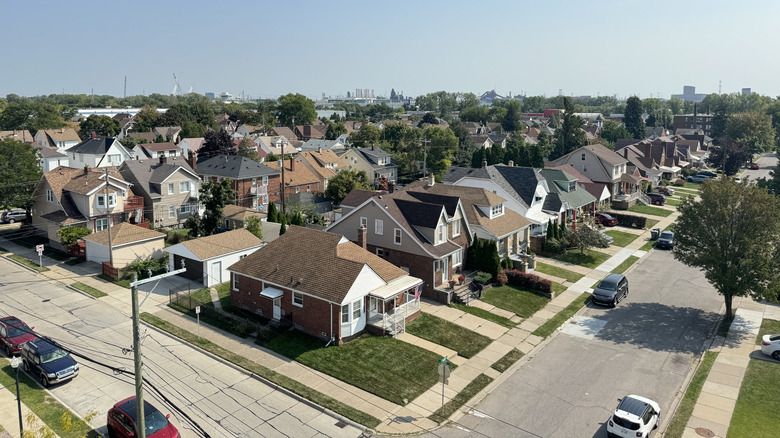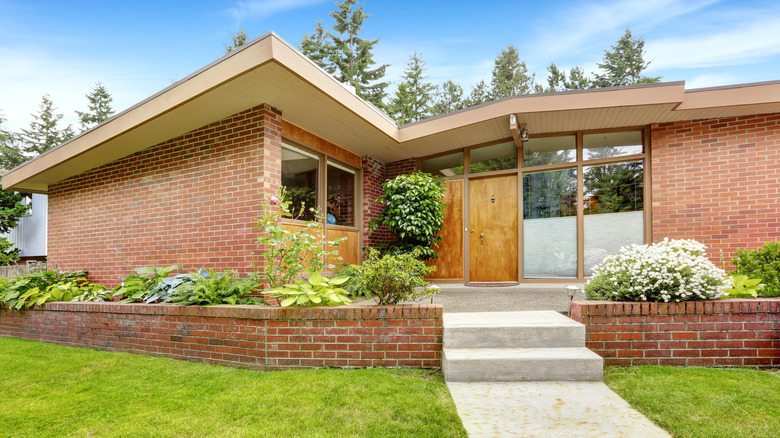Homes Built During These Decades Are The Least Valuable. Why You Should Avoid Them
Whether you're currently house hunting or simply wondering how much your home is worth, there are tons of factors that can affect property value. Some buyers prefer historic homes, while others prioritize new builds. Homebuying is extremely subjective, but there are certain features that could wreck your home's value, and some are more common in homes from certain eras.
Unsurprisingly, homes built within the last five to 10 years are valued the highest of any other decade on the market. Buyers are drawn to new construction homes because of fewer surprises and increased customization options. Although the cost is higher, buyers are often willing to pay the price for perceived quality. However, this doesn't mean that vintage homes aren't still sought after. In fact, homes built before 1940 can also command a respectable price tag. Homes built between the 1940s and the 1990s, particularly those constructed in the 1970s, have historically had trouble holding the same value. Part of the problem is that houses built following the Second World War suffered from a lack of material availability. Plus, houses built after 1980 typically adhere to more modern building code requirements as well as safety and energy efficiency standards.
Some vintage homes can achieve a higher value
There are a few key reasons to avoid buying and owning mid-century homes. One of the major downsides is the high cost of upkeep and preservation compared to other eras. Demolition of houses built from the mid-1940s to the early 1970s is very common, partially due to fittings that aren't compatible with modern technology and construction. Another huge problem with homes built between the 1940s and 1970s is that they are generally smaller and lack modern functionality, with issues like tiny master bathrooms. On top of the upkeep and layout, houses built between 1950 and 1970 often have remnants of lead paint and asbestos. Plus, the insulation, wiring, and plumbing may need to be replaced over time. Unless you are prepared to make significant upgrades, these homes might be too high-maintenance for optimal livability.
If your home — or prospective home — falls into the mid-century decades, don't lose hope. Although they historically haven't sold for as much as brand-new homes on average, there is certainly a market for well-preserved mid-century homes. The buyer who prefers a mid-century home is looking for emotional, architectural features like wall-to-wall windows, natural light, and authenticity. You can also explore the best ways to help reduce your energy costs at home. Regarding the presence of asbestos and lead, we spoke to a construction expert about how you can identify asbestos insulation. By making safety concerns a priority, you can give future buyers peace of mind. Plus, there is actually a shift in the market with more buyers who are preferring older homes, and that is only predicted to grow over time.

